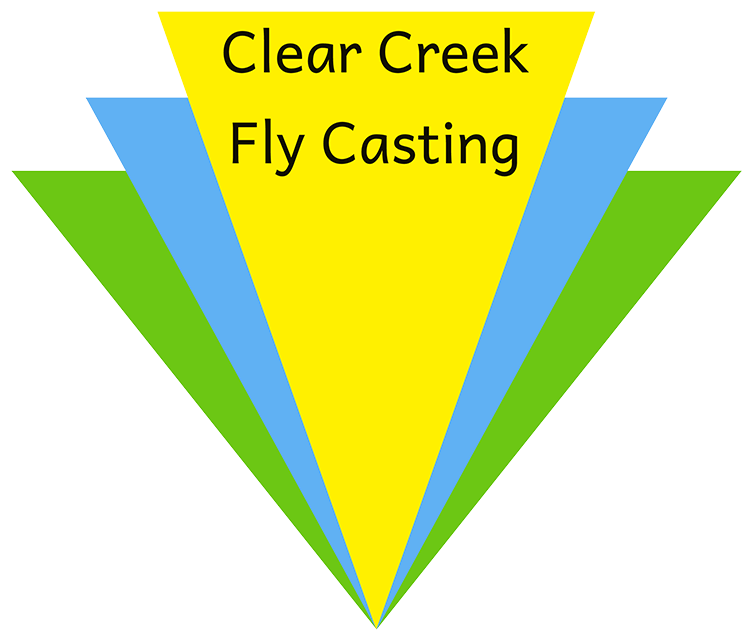

Welcome to my quarterly newsletter, “Tight Loops”! This newsletter is for you, the reader and fly fisher. We all get so much information these days that is difficult to sift through. This newsletter is designed to give you a format you can scan quickly to know what’s there and read at your leisure. Quarterly distribution seems a good match with my schedule and the amount of information we all get in our mail. Here’s how it works:
UPCOMING EVENTS AND INFORMATION
IFFF EASTERN ROCKY MOUNTAIN COUNCIL EXPO: This will be in Glenwood Springs, Saturday October 8th. I will be leading a class from 8-12 called “Getting Ready to Become a Certified Casting Instructor” which will cover what you need to know to get started. If you have serious intent or are just curious about what’s involved, this is the class for you! In the afternoon I will lead the workshop: “Discover the Secret to Good Fly Casting: Improving Accuracy, Distance and Practice.” Contact jonathan@clearcreekflycasting.com
FLY FISHING RENDEZVOUS: I will be teaching again at this event at the Jeffco Fairgrounds, 11/5-6. There will be a 40-60 minute casting presentation at 10 AM and 2 PM each day. Come and ask questions, consult about casting problems, or just cast! Lots of great vendors, fly tyers and speakers at this event! Here’s the link: www.flyfishingrendezvous.com
SALT WATER CASTING CURRICULUM: Whether you have a salt water trip booked this winter or just want to learn more, this curriculum encompassing three 90 minute lessons is a great start. It’s not too early to start practicing; you can never practice too much! Lessons arranged by contacting instructor at jonathan@clearcreekflycasting.com
GIFT CERTIFICATES: This is a unique gift for any fly fisher, new or seasoned. Contact the instructor at jonathan@clearcreekflycasting.com
The two things you can do to improve your cast: a description of 2 commonly observed and easily remedied mistakes I see at lessons and on the water. There are 2 mistakes I see people making time and again. The first of these is uncontrolled slack. Uncontrolled slack is an accumulation of line beyond the reel or line tip that prevents immediate line tension when desired. It’s significant when it ruins the cast or makes hookup difficult. Instead of starting the cast with rod tip low to the water (within 6-12”) and line straight, the caster starts with rod tip higher and/or fails to remove slack caused by current or wind. This is especially seen when making an upstream presentation where the current puts a big bow in the line under and downstream of the rod tip. Without good line tension in the cast, the casting arc size must be increased to remove the slack and a wide, sloppy, uncontrolled back loop results. This often necessitates 2-3 false casts to correct, which fatigues the caster and spooks fish! These solutions take some thought and discipline but are well worth the effort:
The second thing you can do to improve your cast takes a bit more practice: improve your back cast! The back cast sets up the forward cast. Sometimes a poor back cast is caused by uncontrolled slack, but more often by a wide casting arc, often underpowered, resulting in a wide back loop even when all the line was initially under tension. Then several false casts are required to get a good delivery. One student put it succinctly: “I have to get it going.” This caster was trying to form a loop he had confidence in and it took 2-4 false casts to achieve this! Here’s how to practice to improve the back cast:
ASK THE INSTRUCTOR
Why won’t my line/leader layout straight?
Most try to address this by adjusting their forward cast. This is frustrating because it rarely works. The problem is usually in the back cast!
How should I stand when fly casting/fishing?
My answer goes beyond practical towards pragmatic. Stand how you are comfortable! I find that most students stand in a way that is appropriate and doesn’t hinder the cast. I only suggest a change in stance when I think it would help in some way. Examples are:
The most important aspect though is that when fishing our stance is often dictated by the terrain. I have cast from a prone position on the bank, kneeling in the river, seated in a drift boat and even hanging by one hand from a tree limb. (The last of these seemed like a good idea at the time until the fish actually ate the fly---not a posture I’d recommend!) So in sum, stand comfortably and be flexible because fishing will demand it!
SUGGESTION BOX
Presently empty---please fill it up! Contact jonathan@clearcreekflycasting.com